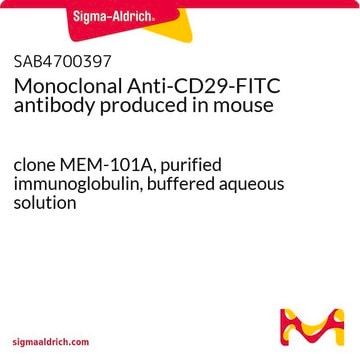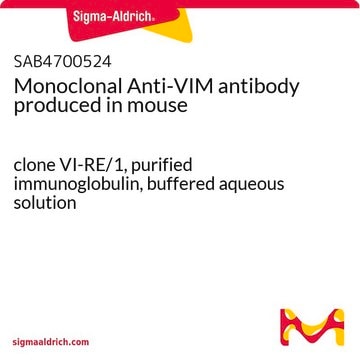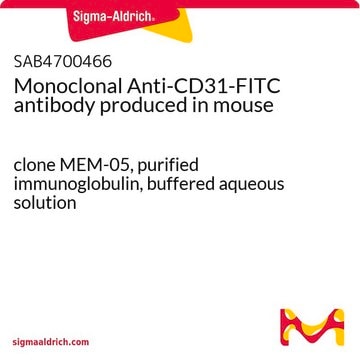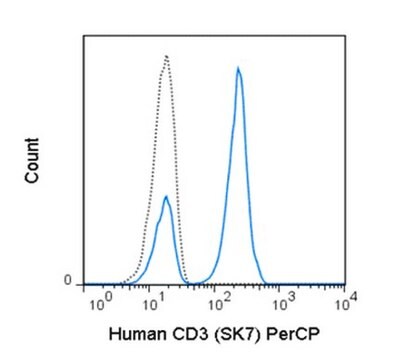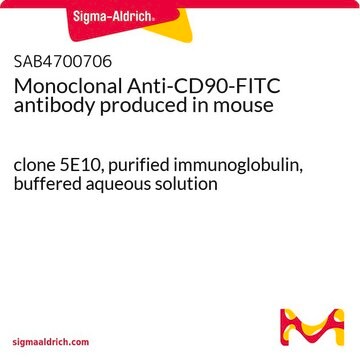F8402
Monoclonal Anti-CD31 (PECAM-1)−FITC antibody produced in mouse
clone WM-59, purified immunoglobulin, buffered aqueous solution
Synonyme(s) :
Monoclonal Anti-CD31, Anti-PECAM-1
About This Item
Produits recommandés
Source biologique
mouse
Conjugué
FITC conjugate
Forme d'anticorps
purified immunoglobulin
Type de produit anticorps
primary antibodies
Clone
WM-59, monoclonal
Forme
buffered aqueous solution
Poids mol.
antigen 130-140 kDa
Espèces réactives
human
Conditions de stockage
protect from light
Technique(s)
flow cytometry: 10 μL using 1 × 106 cells
Isotype
IgG1
Numéro d'accès UniProt
Conditions d'expédition
wet ice
Température de stockage
2-8°C
Modification post-traductionnelle de la cible
unmodified
Informations sur le gène
human ... PECAM1(5175)
Vous recherchez des produits similaires ? Visite Guide de comparaison des produits
Catégories apparentées
Description générale
Spécificité
5th Workshop: code No. P025
Immunogène
Application
Flow cytometry/Cell sorting (1 paper)
- DAB based-immunohistochemistry
- direct immunofluorescent staining
- fluorescence-activated cell sorting (FACS)
- flow cytometry
Actions biochimiques/physiologiques
Description de la cible
Forme physique
Notes préparatoires
Clause de non-responsabilité
Not finding the right product?
Try our Outil de sélection de produits.
Code de la classe de stockage
10 - Combustible liquids
Classe de danger pour l'eau (WGK)
nwg
Point d'éclair (°F)
Not applicable
Point d'éclair (°C)
Not applicable
Équipement de protection individuelle
Eyeshields, Gloves, multi-purpose combination respirator cartridge (US)
Certificats d'analyse (COA)
Recherchez un Certificats d'analyse (COA) en saisissant le numéro de lot du produit. Les numéros de lot figurent sur l'étiquette du produit après les mots "Lot" ou "Batch".
Déjà en possession de ce produit ?
Retrouvez la documentation relative aux produits que vous avez récemment achetés dans la Bibliothèque de documents.
Notre équipe de scientifiques dispose d'une expérience dans tous les secteurs de la recherche, notamment en sciences de la vie, science des matériaux, synthèse chimique, chromatographie, analyse et dans de nombreux autres domaines..
Contacter notre Service technique
